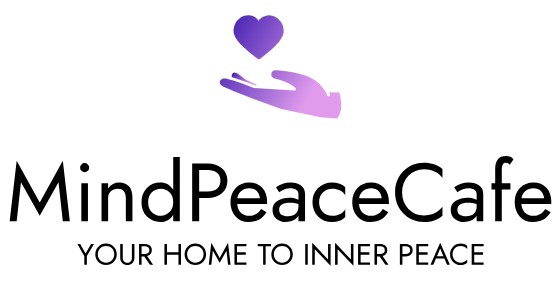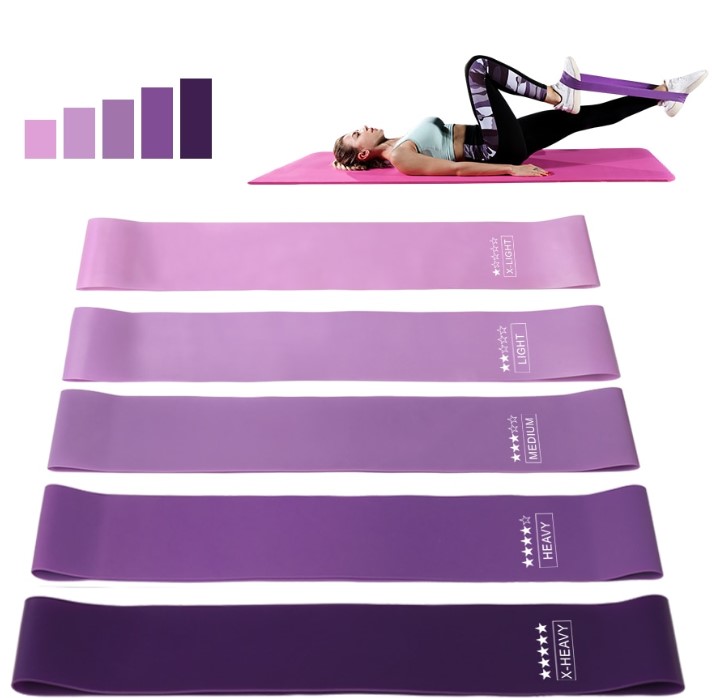Harmonizing Body and Mind: The Holistic Art of Tai Chi and Qigong

Unlocking Tranquility: Exploring Movement Meditation through Tai Chi and Qigong. In today’s fast-paced world, finding peace and quiet amidst the chaos can seem like an impossible task. Yet, within the art of movement meditation lies a powerful method for achieving serenity. Tai Chi and Qigong, ancient Chinese practices, offer a pathway to physical, mental, and emotional well-being through deliberate, flowing movements and focused breathing. By delving into the origins and principles of these practices, embracing their health benefits, and discovering how to find the right classes, individuals can unlock a journey toward holistic wellness and vitality. The gentle yet profound impact of Tai Chi and Qigong serves as a testament to the transformative potential of movement meditation in fostering a harmonious mind-body connection, ultimately leading to a more balanced and serene life.
1. Understanding Movement Meditation
Understanding Movement Meditation: Explore the concept of movement meditation and its profound impact on physical, mental, and emotional wellness. Movement meditation encompasses a variety of practices that integrate physical movement with mindfulness and breath awareness to cultivate inner peace and holistic well-being. By engaging in these mindful activities, individuals are able to synchronize their breath with their movements, promoting a sense of calm and focus while also enhancing physical strength and flexibility. This approach not only has a positive impact on the body but also serves as a powerful tool for reducing stress, improving mental clarity, and boosting emotional resilience.
Moreover, movement meditation such as Tai Chi and Qigong is renowned for its gentle, yet impactful nature, making it accessible for people of all ages and fitness levels. These ancient practices facilitate a harmonious fusion of physical and mental elements, allowing practitioners to attain a state of tranquility and balance. Through this understanding, individuals can embark on a journey of self-discovery, honing their mind-body connection and fostering a deep sense of serenity in their lives. By exploring the profound impacts of movement meditation, individuals can unlock the potential for improving their overall wellness and quality of life.
The Essence of Tai Chi and Qigong
The Essence of Tai Chi and Qigong: Delve into the origins and principles of Tai Chi and Qigong, and how they promote mindfulness and harmony. Tai Chi and Qigong, originating from ancient Chinese traditions, are holistic practices that intertwine physical movement with mental focus and deep breathing. Tai Chi, often described as a ‘moving meditation,’ incorporates a series of slow, graceful movements that flow seamlessly from one to the next, emphasizing balance, coordination, and flexibility. On the other hand, Qigong, with its roots in traditional Chinese medicine, centers around coordinating breath with movement and posture to enhance the flow of vital energy, or ‘qi,’ throughout the body. Both practices are deeply rooted in mindfulness and intention, encouraging practitioners to embrace a state of inner tranquility and holistic wellness.
The principles of Tai Chi and Qigong are founded on the concepts of yin and yang, harmonizing opposites to create balance within the body and mind. Amidst the gentle, deliberate movements, individuals learn to synchronize their breath, release tension, and cultivate a profound sense of awareness. With regular practice, these ancient arts not only promote physical health and dexterity but also serve as a powerful means to foster mental clarity and emotional equilibrium, leading to an enriched quality of life.
Furthermore, the essence of Tai Chi and Qigong lies in their ability to instill a deep, harmonious connection between the body, mind, and spirit. These practices offer a sanctuary from the demands of modern life, guiding individuals towards a place of inner calm and centeredness. By embracing the essence of Tai Chi and Qigong, individuals can embark on a journey towards self-discovery and well-being, unlocking an enduring sense of harmony and vitality.
The Practice of Mindful Movements
The Practice of Mindful Movements: Uncover the art of connecting mind and body through slow, deliberate movements and regulated breathing techniques. Mindful movements, as seen in Tai Chi and Qigong, emphasize the seamless fusion of physical activity with mental acuity, all while maintaining a deep focus on breath and intention. These practices invite individuals to engage in deliberate, flowing movements that facilitate an intimate connection between the body and mind, fostering a state of calm and centeredness. Through the gentle transition from one posture to the next and the regulated pace of breath, practitioners are able to cultivate a profound sense of mindfulness and embodiment.
At the heart of mindful movements lies the concept of intentional, present-moment awareness—a fundamental principle that serves as a guiding light throughout the practice. Each motion is meticulously executed, creating an environment for individuals to remain fully attuned to the sensations within their bodies, the rhythm of their breath, and the environment around them. By embracing the meditative nature of these movements, individuals can awaken a heightened sense of physical and mental awareness, ultimately promoting a deeper sense of connection and tranquility.
Moreover, the art of mindful movements extends beyond the physical realm, influencing mental and emotional well-being as well. The deliberate, unhurried nature of these practices encourages individuals to unwind, release tension, and relinquish mental clutter, fostering a serene and composed state of being. By immersing in the practice of mindful movements, individuals can embark on a transformative journey towards holistic wellness and self-discovery.
2. Health Benefits of Tai Chi and Qigong

Health Benefits of Tai Chi and Qigong: Discover the array of physical and mental advantages gained from consistent practice of Tai Chi and Qigong. The practice of Tai Chi and Qigong offers a multitude of benefits that extend to both physical and mental well-being. Through the gentle, purposeful movements and breath awareness, practitioners can experience improved flexibility, balance, and strength. These ancient practices are renowned for enhancing muscular flexibility, joint mobility, and overall physical stability, making them particularly beneficial for individuals of all ages and fitness levels.
Moreover, consistent engagement in Tai Chi and Qigong has been associated with numerous mental health advantages. The meditative aspects of these practices promote stress reduction, increased emotional resilience, and improved mental clarity. By fostering a deep sense of relaxation and mindfulness, individuals can effectively alleviate the burden of anxiety and tension, promoting a greater sense of emotional equilibrium and overall well-being.
The holistic nature of Tai Chi and Qigong makes these practices uniquely impactful, offering benefits that transcend the physical and mental realms. Engaging in these mindful activities enables individuals to cultivate a profound mind-body connection, fostering a sense of harmony and balance within themselves. Through the practice of Tai Chi and Qigong, individuals can embark on a transformative journey towards improved health, vitality, and holistic wellness.
Enhanced Flexibility and Balance
Enhanced Flexibility and Balance: The gentle movements of Tai Chi and Qigong contribute significantly to improved flexibility, stability, and coordination. These mindful practices are designed to engage the entire body, promoting fluidity of motion and enhancing physical dexterity. Through purposeful, flowing movements and deliberate shifts in weight, individuals can experience a noticeable improvement in their flexibility, particularly in the muscles and joints. By regularly practicing Tai Chi and Qigong, individuals can foster a greater range of motion, allowing for increased flexibility and reduced risk of injury as they engage in daily activities.
Furthermore, the deliberate and controlled nature of Tai Chi and Qigong movements encourages practitioners to develop a strong sense of balance and stability. The slow and methodical transitions from one posture to another strengthen core muscles and improve overall stability, reducing the likelihood of falls and enhancing coordination. Over time, consistent practice of these gentle yet impactful movements can lead to a greater sense of physical confidence, particularly among older adults who may benefit from improved balance and equilibrium.
The emphasis on balance and flexibility underscores the holistic approach of Tai Chi and Qigong, demonstrating that these practices offer benefits that extend far beyond the physical. Through dedicated practice, individuals can experience a profound transformation in their physical well-being, cultivating a sense of strength, grace, and balance that enriches their daily lives.
Stress Reduction and Emotional Resilience
Stress Reduction and Emotional Resilience: Movement meditation, particularly through Tai Chi and Qigong, offers a sanctuary from the chaos of daily life, providing individuals with a powerful toolkit for stress reduction and emotional resilience. The deliberate, gentle nature of these practices serves as an antidote to the rigors of modern existence, offering individuals a space for introspection and calm. Through the synchronization of movement and breath, practitioners are able to cultivate a deep sense of relaxation and tranquility, effectively alleviating the burden of stress and anxiety that often plagues daily life.
Moreover, the meditative aspects of movement meditation play a pivotal role in bolstering emotional resilience. By fostering a state of present-moment awareness and mindfulness, individuals can gain a greater capacity to manage their emotional responses, fostering a sense of inner strength and stability. Tai Chi and Qigong provide individuals with a means to process and release emotional tension, facilitating a greater sense of emotional equilibrium and well-being.
The integration of stress reduction techniques and emotional resilience within movement meditation serves as a testament to the profound impact these practices have on holistic wellness. By exploring the calming effects of Tai Chi and Qigong, individuals can embark on a transformative journey towards a more balanced and resilient emotional state, effectively navigating the challenges of daily life with grace and composure.
3. Finding the Right Tai Chi and Qigong Classes
Finding the Right Tai Chi and Qigong Classes: Embarking on a journey into the world of Tai Chi and Qigong begins with finding the ideal classes to suit your needs and aspirations for movement meditation. Local community centers, martial arts studios, and wellness facilities often offer classes led by experienced instructors. It’s essential to consider your personal goals and schedule when selecting a class, ensuring that it aligns with your availability and level of experience. Additionally, seeking recommendations from friends, family, or local wellness communities can provide valuable insights into reputable instructors and class environments.
As the digital world continues to expand, virtual classes have become increasingly popular for individuals seeking the flexibility and convenience of practicing at home. Reputable online platforms offer virtual Tai Chi and Qigong classes, often led by qualified instructors who provide insightful guidance and personalized feedback. When exploring online resources, it’s beneficial to delve into instructor profiles, class structures, and user reviews to ensure a high-quality and enriching experience.
Ultimately, the quest for the right Tai Chi and Qigong classes is a journey of self-discovery and empowerment. By navigating local and virtual class options, individuals can take a significant step toward embracing movement meditation, fostering tranquility, and vitality, and setting the stage for an enriching and transformative experience.
Local Class Search
Local Class Search: When seeking Tai Chi and Qigong classes within your community, local resources such as community centers, martial arts studios, and wellness facilities are excellent places to start. Many community centers and wellness establishments host classes that cater to various experience levels, making them ideal for beginners and seasoned practitioners alike. In these settings, individuals can benefit from in-person instruction, fostering a sense of connection and community spirit as they embark on their movement meditation journey.
Martial arts studios also frequently offer Tai Chi and Qigong classes, leveraging their expertise in physical disciplines to provide a comprehensive and authentic learning experience. In this environment, individuals can delve into the traditional foundations of these practices while being supported by instructors with a deep understanding of movement meditation. The collective energy within a martial arts studio often proves to be a motivating force, inspiring individuals to cultivate mindfulness and vitality through their practice.
Wellness centers specializing in holistic health and mind-body practices are another valuable avenue for finding Tai Chi and Qigong classes. These centers are dedicated to promoting overall well-being and often employ instructors who are deeply knowledgeable in the art of movement meditation, offering individuals a nurturing and supportive environment to deepen their practice and enrich their wellness journey.
Online Resources and Virtual Classes
Online Resources and Virtual Classes: Embracing movement meditation through virtual Tai Chi and Qigong classes is a convenient and accessible pathway to holistic wellness. Reputable online platforms offer a wealth of resources, connecting individuals with qualified instructors and providing a diverse array of virtual classes. These platforms cater to various experience levels, offering introductory sessions for beginners, as well as advanced classes for those seeking to deepen their practice. With user-friendly interfaces and personalized feedback, individuals can embark on their movement meditation journey from the comfort of their homes, fostering a sense of tranquility and vitality.
Moreover, virtual classes provide the flexibility to engage in movement meditation at any time and from any location. This accessibility is particularly beneficial for individuals with busy schedules, allowing them to cultivate mindfulness and balance in a way that seamlessly integrates with their lifestyle. Additionally, online resources often include informative materials, discussions forums, and live sessions, providing a holistic and immersive learning experience that extends beyond the physical practice of Tai Chi and Qigong.
By embracing virtual classes, individuals can engage with a global community of like-minded practitioners, fostering meaningful connections and shared experiences in their movement meditation journey. Additionally, the diverse range of virtual resources ensures that individuals have the freedom to explore various styles and approaches, tailoring their practice to align with their personal wellness goals.
4. Embarking on a Journey of Wellness
Embarking on a Journey of Wellness: As you prepare to delve into the world of Tai Chi and Qigong, you are embarking on a profound and enriching journey of wellness. These movement meditation practices serve as gateways to tranquility, vitality, and holistic well-being. By uniting breath with purposeful movement, you are aligning your body and mind, fostering a deeper connection with your inner self and the world around you. As you begin this journey, focus on embracing the present moment, allowing the restorative benefits of these practices to unfold naturally.
The practice of Tai Chi and Qigong offers a sanctuary from the demands of daily life, providing a space for introspection, self-discovery, and renewal. Through regular engagement, you will notice the transformation taking place within you, as these time-honored practices bolster your physical wellness, mental clarity, and emotional resilience. Embrace the gentle flow of movement, the rhythm of your breath, and the evolving sense of harmony within yourself as you navigate this journey towards a more balanced and tranquil state of being.
The journey of embracing Tai Chi and Qigong is a testament to your commitment to holistic wellness and self-care. The path you are about to walk is one filled with serenity, vitality, and unity. You are opening a gateway to a new way of living—one that nurtures your mind, body, and spirit, empowering you to embrace each day with energy, clarity, and joy.
Embracing the Mind-Body Connection
Embracing the Mind-Body Connection: Through the practice of Tai Chi and Qigong, individuals cultivate a profound harmony between the mind and body, fostering holistic well-being and vitality. The deliberate, flowing movements of Tai Chi and Qigong serve as a conduit for achieving a deep sense of unity between physicality and mental clarity. As practitioners synchronize their breath with each movement, they embark on a journey that nurtures physical strength, mental acuity, and emotional balance. This harmonious interplay creates a space for individuals to attune to their bodily sensations, quiet the mind, and nourish the spirit, fostering a sense of profound well-being.
The mind-body connection fostered through Tai Chi and Qigong extends beyond the practice itself, influencing how individuals engage with the world around them. By embracing this unity, practitioners gain a greater resilience to the stress of daily life, a heightened awareness of their physical presence, and a renewed sense of energy and vitality. With each practice session, individuals not only strengthen their bodies but also cultivate a sense of inner peace and serenity, equipping them to navigate life with grace and clarity.
The holistic well-being and vitality attained through the mind-body harmony of Tai Chi and Qigong serve as a testament to the transformative power of these ancient practices. By embracing this harmonious connection, practitioners can cultivate a deep source of resilience, vitality, and balance that enriches their daily lives and paves the way for a more connected and vibrant existence.
Creating Sustainable Wellness Practices
Creating Sustainable Wellness Practices: Integrating movement meditation, such as Tai Chi and Qigong, into your daily routine is a transformative and empowering approach to nurturing lasting health benefits. Begin by setting aside dedicated time each day to engage in these practices, whether it’s waking up to a morning session or unwinding with an evening practice. By establishing a consistent routine, you’ll be able to weave the restorative nature of movement meditation into your everyday life, fostering a sense of balance and vitality that extends far beyond the practice itself.
In addition, consider the environments in which you engage in movement meditation. Whether it’s a tranquil park, a serene corner of your home, or a dedicated studio space, creating an environment that fosters tranquility can significantly enhance your experience. By infusing your surroundings with elements of peace and mindfulness, you’ll be better positioned to cultivate a deeper connection with your practice, nurturing a sense of calm and focus as you engage in Tai Chi and Qigong.
Furthermore, seek opportunities to share your journey with like-minded individuals. Whether it’s joining a local meditation group or connecting with virtual communities, fostering a network of support can provide encouragement and motivation. By exchanging experiences and insights, you’ll be able to enrich your practice and sustain your wellness efforts, fostering a sense of shared connection and collective growth within the movement meditation community.
How often should I practice Tai Chi and Qigong?
Consistency is key when practicing Tai Chi and Qigong. Aim for at least 3-4 sessions per week, with each session lasting around 20-30 minutes. Regular practice allows you to experience the full benefits of these movement meditations, promoting physical, mental, and emotional well-being.
I’m a beginner. What should I look for in a Tai Chi or Qigong class?
For beginners, it’s essential to find instructors who emphasize proper posture, breathing techniques, and foundational movements. Look for classes that cater to beginners and provide clear instructions, ensuring a safe and enriching learning environment.
Can Tai Chi and Qigong help with stress and anxiety?
Yes, Tai Chi and Qigong are renowned for their calming effects on stress, anxiety, and emotional well-being. The mindful movements and regulated breathing techniques serve as powerful tools for reducing stress and enhancing emotional resilience.
How can I integrate Tai Chi and Qigong into my daily routine?
To integrate Tai Chi and Qigong into your daily routine, establish a dedicated practice time, create a tranquil environment for your practice, and seek like-minded individuals for support and motivation. Consistency and a peaceful setting can significantly enhance your movement meditation experience.
Do I need any special equipment or attire for Tai Chi and Qigong?
Tai Chi and Qigong generally require no special equipment. Comfortable, loose-fitting clothing and flat, non-slip shoes are commonly recommended. A peaceful environment and a willingness to embrace tranquility are the most crucial factors for a rewarding practice.




